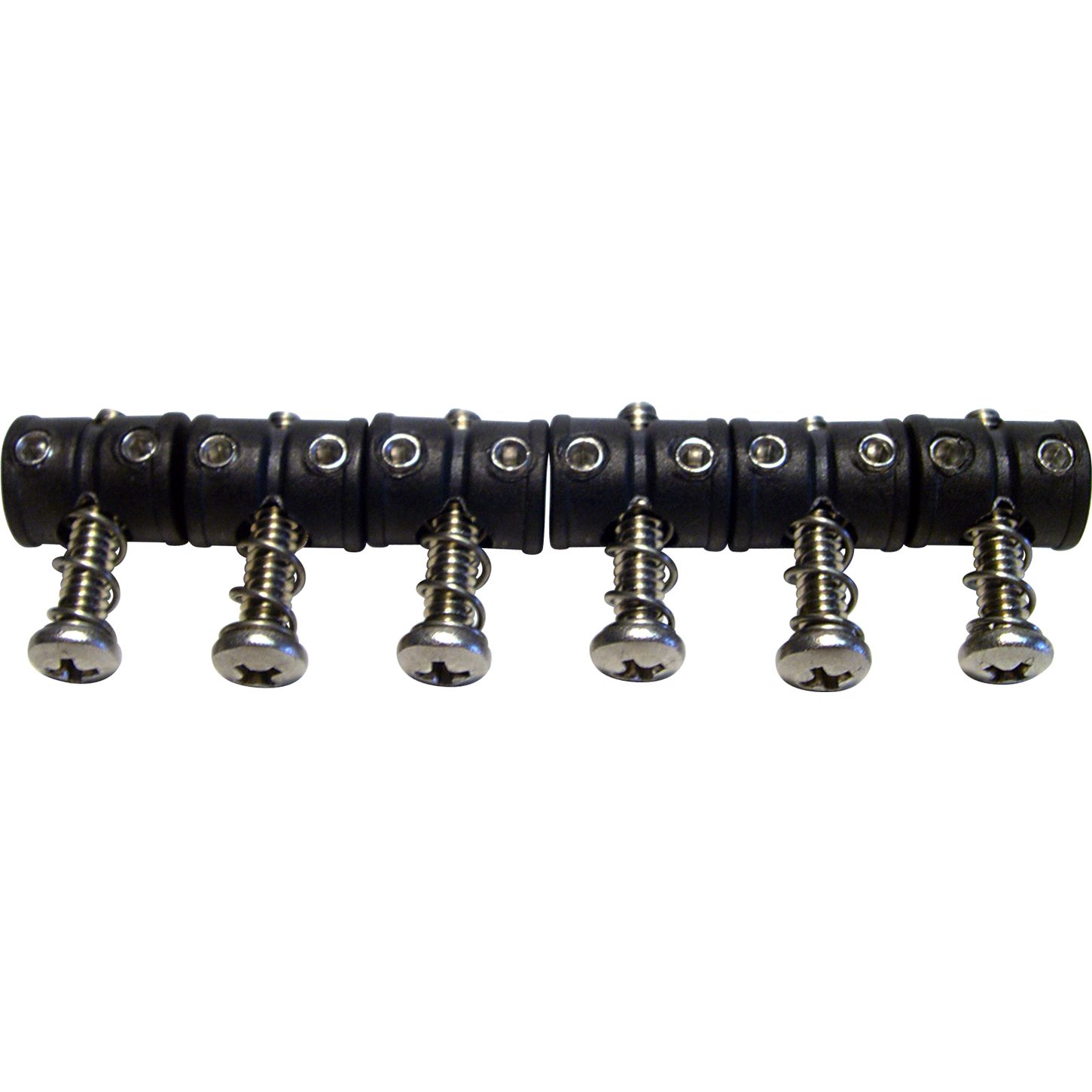It only happened when the bridge was tilted a certain way (and let's face it, expecting it to always be in the middle is highly optimistic) but it was really annoying. I decided to raise the tailpiece a bit but I didn't want to overdo it, and then I experimented with adding a bit of tape to cover the head of the intonation screws, but that looked ugly, though it worked. I even tried fixing the bridge with a bit of tape around the posts but then I felt like I had made out with my own sister or something dirty like that and quickly undid that. Plus, it didn't even work. I was on Mastery Bridge's website at least three times throughout this little ordeal. The thing is, this buzz had zero effect on my amped tone, but it was just annoying the hell out of me to have my dream guitar have this problem.
Then I got the super simple idea of simply flipping the bridge 180 degrees, such that the intonation screws are facing the pickups instead of the tailpiece, like your average Tune-O-Matic bridge. This took all of 3 minutes (thank God for split tuners, easy to unstring and restring) and it seems to have solved all of my problems. The only problem I can foresee is that the end of the E string intonation screw does seem like it might hit the string behind the saddle at some point if my tailpiece were any lower, but it's not happening so I don't have to worry about it. Plus, I can see a simple solution if that's a problem: just get a shorter screw (or use a screw cutter).
So, honestly, I had never paid attention to the bridge that much because a Mustang bridge just tends to work (this is my fifth guitar with a Mustang bridge), but is there a reason why the stock setup has the intonation screw heads pointed toward the tailpiece? The saddles are symmetric, and if they weren't, they can easily be flipped, and plus, it just seems like it really offers no benefit.
It probably isn't a problem in a Jaguar or a Jazzmaster due to the gentle string break angle but I would think that on a Mustang vibrato, people like to clamp that thing pretty far down sometimes and that has to cause some buzzing issues. In fact, looking back, that might have been the reason why my '69 RI buzzed so much at the bridge. The bridge has a tendency to roll toward the neck because of the way I play, where I'll often smack the tailpiece (I rarely use the bar) to create a bit of dive and doesn't really return to center, and at that position, the strings can easily hit the intonation screws and cause a buzz, annoying the hell out of whoever's playing.
Anyway, I think the Mustang's time on the workbench is finally over (bad lighting makes it look really yellow):

The mods I've done are:
1) I installed Lace Silver RW in neck and Lace Purple in bridge. These are two pickups from their Rainbow Pack, and then I have a Green Sensor left over. Even though Lace are low noise, the fact that I have a reverse wound neck means it's truly whisper quiet with both pickups on, which I wanted.
2) I swapped out the stock switches for Switchcraft slide switches from All Parts because I hate the little retaining nuts on the Fender Japan switches, makes them a pain in the ass to remove and install.
3) I set the switches to float and then used a 4-conductor shielded wire (as used on humbuckers) to bring the pickups to the control cavity.
4) I swapped the volume pot for an Alpha 500k push-pull to give series when pulled. I really love the series sound a lot, sounds thick and creamy and the reverse wound pickups help it be extremely quiet too. The annoying thing is that series only makes a sound when both pickups are on, which results in some dead positions, but pickups can be out of phase and series as well, which is kind of cool. When push-pull is down, it acts just like a normal Mustang. I chose this over various other wiring mods because I hate the Morse code nature of most of the Mustang mods and I wanted something that kept the stock behavior b/c I actually really like stock Mustangs.
5) I swapped the tone pot for a Fender TBX tone control, which is a dual-ganged CTS pot. I used an alternative configuration to offer bass cut clockwise and treble cut counterclockwise. Absolutely wonderful, really, it can clean up the sound. Think, an adjustable strangle switch. Since both of these pots had larger shafts than the existing pots, I had to ream out the control cavity, which took fucking ages with a tapered reamer. Oh, by the way, both the Alpha pot and the TBX pot barely fit inside the control cavity. Now add a four-conductor wire to the picture and yeah, it's not pretty.
6) Switchcraft jack.
7) I got Fender USA Jazz Bass knobs w/ set screw, since existing knobs didn't fit the TBX pot anyway.
And that's it. This Mustang is really perfect now. It plays great, it sounds great. It does everything I thought a short scale should ever do, and it's a looker, too.









